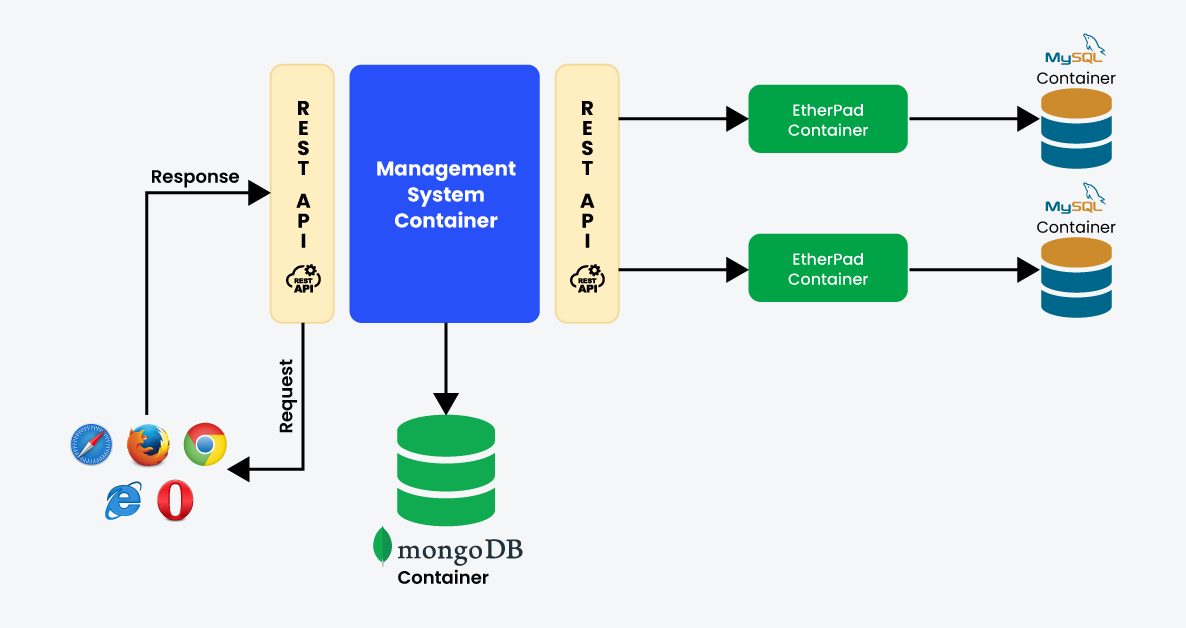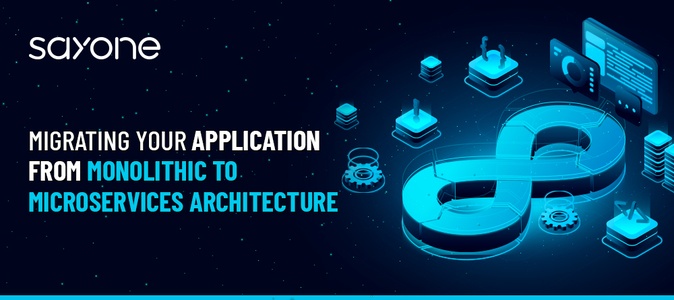Microservices Architecture - When and How to Shift

Share This Article
Migrating Your Application from Monolithic to Microservices Architecture
Table of Contents
Subscribe to Our Blog
We're committed to your privacy. SayOne uses the information you provide to us to contact you about our relevant content, products, and services. check out our privacy policy.
Many organizations are now looking to break their monolithic code and shift it into a microservices architecture. Today, shifting into distributed architecture is easiest with Docker and Kubernetes. In a survey conducted in 2020 with approximately 1500 respondents, more than one-third of them said that their organizations had been using microservices for more than 1 year now.
Many other technologies are also sprouting up in this realm. Without a doubt, microservices are the strongest pillars of innovation today. However, it is important to be wary that incorrect adoption methods can bring operations to a standstill.
When Should You Adopt Microservices Architecture

Microservices bring many advantages, such as accelerating the velocity of deployments and solving issues with complexity. However, the implementation of microservices systems presents challenges that can slow down the pace of innovation.
Download and read our ebook “Porting from Monoliths to Microservices - Is the shift worth it?”
The best argument that supports porting to a microservices architecture is when the complexity of the software ecosystem in your organization becomes a challenge for you. Some use cases are listed below:
Data Complexity
When business data gets out of control in an organization, it means more downtime if you have a software application running. This reflects in every other aspect including your business reputation.
In such a situation, it is easier to manage when you separate data sources for each area of your business. That is, there could be separate databases for your products, orders, accounts, clients, services, and payments. When you implement the microservices architecture, this turns into one database and becomes an independent one for each microservice that takes care of each different area of your business. The net result is that data complexity dissolves and becomes easier to maintain.
Team Size
As the size of development teams grows, it happens that each developer works on the same codebase. This, slowly, makes the developed code complex and difficult to understand. The overall quality is reduced and mistakes happen too often.
Read our blog, “How to hire the best Kubernetes developers”.
Deployment
The ability to scale an application becomes more difficult and complex as its size and functionalities grow. More resources are consumed when a big-sized application is scaled according to an increase in demand. There is also an increase in expenditure. However, a shift to microservices allows you to scale different parts of the application independently. Moreover, this does not affect any other microservice that is currently working. The net result is granularization of the application, the ability to update each small part of the application independently and deploy numerous applications in a day.
Read our blog: 5 Things Enterprises Should Know about Microservices Architecture
Now that complexities have been detailed, given below are some points that have to be followed by you if you intend to port to microservices from a monolithic application architecture.
Microservices are not a Solution for every Business
Embracing microservices brings about significant benefits for organizations. It is also true that organizations that choose to ignore microservices may soon get left behind. However, another bare truth is not every business that adopts a microservices model can hope to capitalize on the architecture. Here are some organizational caveats that you have to keep in mind.
Start your microservices journey! Give us a call today!
-
Be ready for rapid provisioning of resources
The adoption of microservices will keep your organization on its toes owing to incremental development and continuous delivery schedules.
Your organization should be able to instantly provision resources such as computing power, server resources, etc., to keep pace with running microservices and make the most out of its functionalities. If provisioning of resources such as servers takes a long time, you may run into serious trouble. Similarly, you should be able to deploy new services and applications quickly.
-
It is important to robustly monitor the systems
Each of the microservices is dependent on its language, APIs, and platform. Moreover, you will be guiding multiple independent teams, each working simultaneously on different aspects/services of your microservices project. Therefore, you will need to robustly monitor and manage all the teams. If you are not aware when a service fails or a machine stops working, it may be next to impossible to track down the issues that caused the problem in the first place.
-
Adopting DevOps culture is a must
When you work with cross-functional teams, incorporating DevOps practices and culture would help. Whereas in a traditional setting, developers focus on features and functionalities, and the operations team is sorting out production challenges, in DevOps, every team member is responsible for both service provisioning and failure.
-
Testing becomes complex
Microservices testing is not straightforward. Each of the services has its dependencies of which some are direct and others transitive. When features are added, new dependencies show up and the system becomes more complex. Monitoring all of these soon becomes impractical. Database errors, caching issues, network latency, or service unavailability, all of these have to be handled by the microservices architecture. Therefore, resiliency testing and fault injection are compulsory.
-
It is vital to design with failure in mind
It is vital to design the system for failure. The capacity to handle different and multiple failure issues, such as slow service, system downtime, and unexpected responses. Load balancing is important, but it is equally important to have a plan B. In times of failure, the concerned service should be able to run with limited functionality without coming to a standstill.
-
How to port to a microservices system
If your organization is contending with complexities, and you want to deploy updates quickly, porting to microservices architecture may just be the solution for you. However, when porting, it is always better for you to resort to continuous improvement rather than a big bang approach of ditching the old for the new on one fine morning.
Start changing just one area of the application which could benefit from a microservice. This one could be decoupled and scaled or remodeled so that it is easier to maintain, etc.
-
The inevitable challenges
The migration process itself runs into inevitable challenges. Firstly, the migration is likely to take a few years to complete. During this time, both the old and the new systems have to coexist. Managing the data during this time is likely to be a challenge. Syncing patterns to ease out these jams should be followed. You may also have more than one front end for a specific service, the old monolithic application, and the new microservice front-end both being made of different technologies. ‘Micro-frontends’ is a pattern that allows you to plug in the differences and run it as a single cohesive entity.
-
Best Practices – Migration to a microservices architecture
Good architecture design patterns, like domain-driven design, have to be followed for the best results. When using the Strangler pattern, which is highly advised, you can incrementally replace every existing old service with the newer microservices. Once you observe that this new service is providing value, you can start decoupling the next service.
Creating a proxy for an existing monolith or sending requests to the new microservices is the best way to manage the shift. Also, ensure that you appoint a mature team that has experience in handling infrastructure automation, architectural design patterns, and distributed systems.
The team should be capable to deal with the new challenges that turn up when managing transactions, or due to asynchronous communication.
Do you want to shift to microservices architecture? Call and speak to our team today!
How can SayOne Help
At SayOne, we offer independent and stable services that have separate development aspects as well as maintenance advantages. We build microservices especially suited for individuals' businesses in different industry verticals. In the longer term, this would allow your organization/business to enjoy a sizeable increase in both growth and efficiency. We create microservices as APIs with security and the application built-in. We provide SDKs that allow for the automatic creation of microservices.
Our comprehensive services in microservices development for start-ups, SMBs, and enterprises start with extensive microservices feasibility analysis to provide our clients with the best services. We use powerful frameworks for our custom-built microservices for different organizations. Our APIs are designed to enable fast iteration, easy deployment, and significantly less time to market. In short, our microservices are dexterous and resilient and deliver the security and reliability required for the different functions.
Conclusion
Companies stay on in the technological race by their ability to innovate. Observing caution when migrating to microservices architecture and following best practices are perhaps the best methods for change and the insurance policy that the organization can take.
Share This Article
Subscribe to Our Blog
We're committed to your privacy. SayOne uses the information you provide to us to contact you about our relevant content, products, and services. check out our privacy policy.



